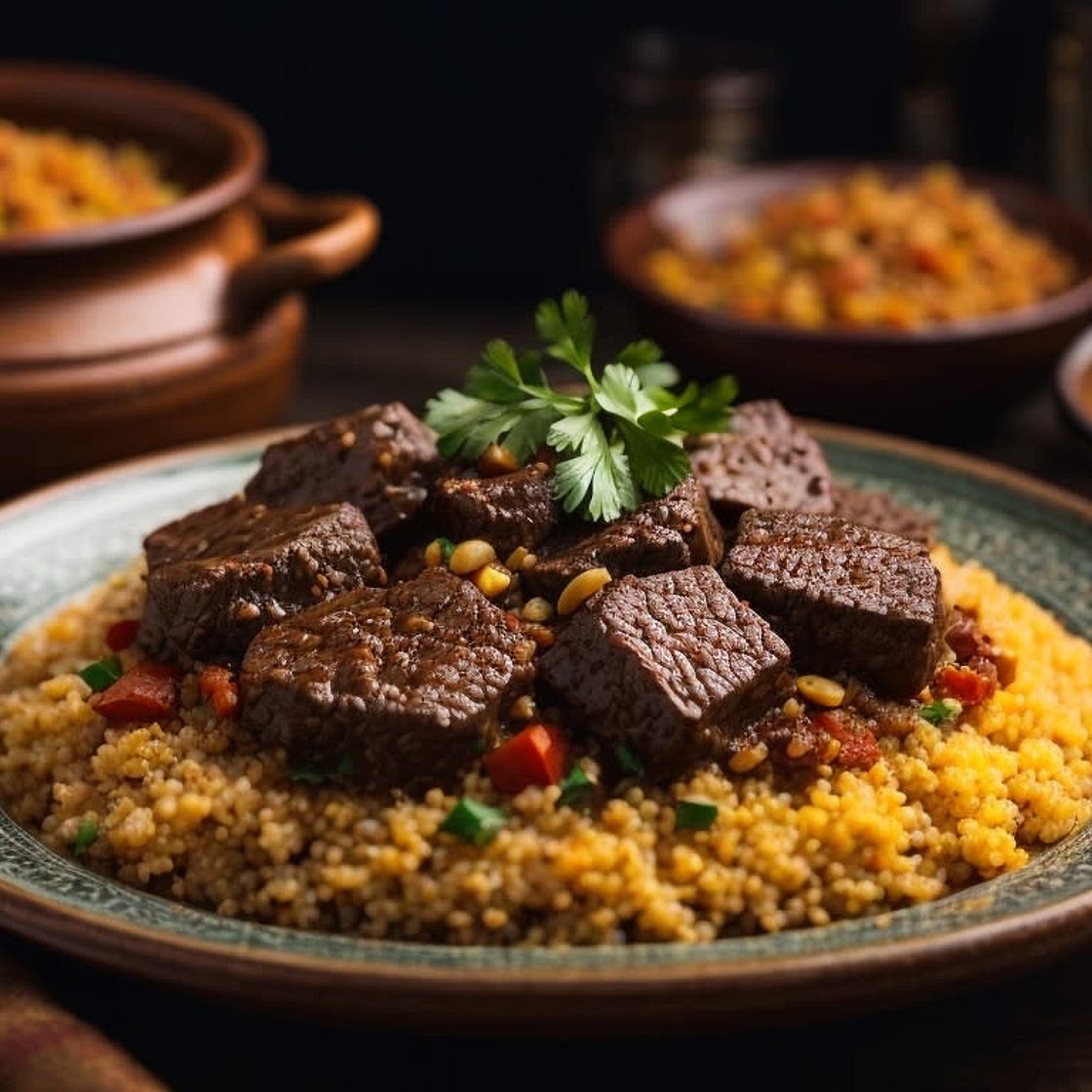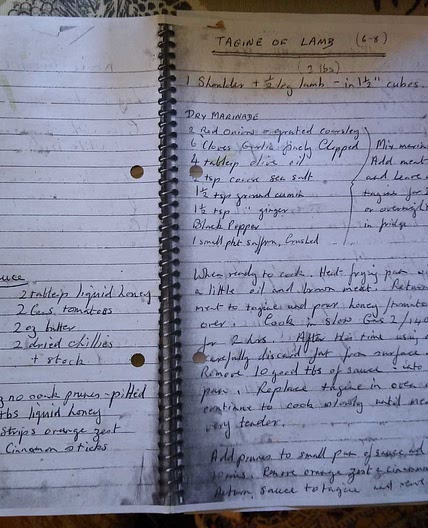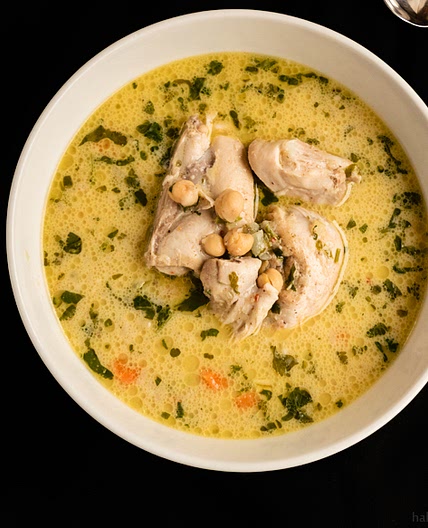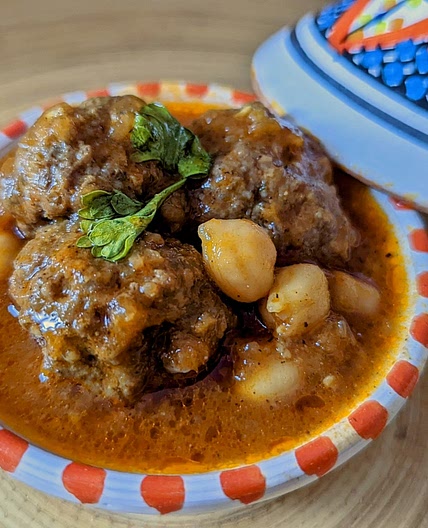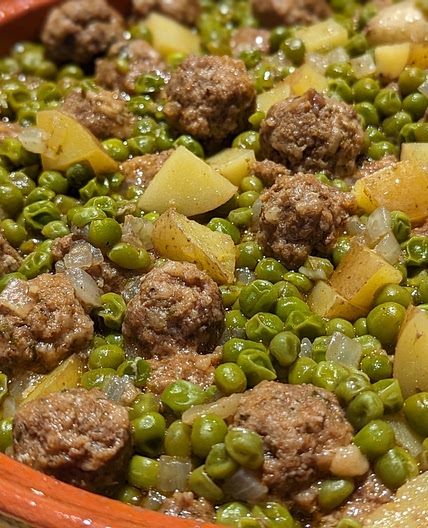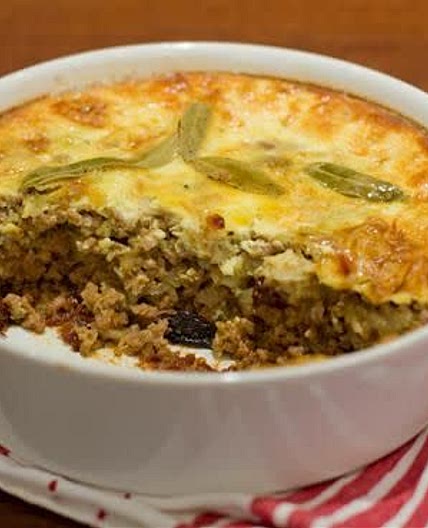By Chris Martin
Beef Cheek Tagine
7 steps
Prep:23h 59minCook:3h
My mother, like me, was born in Morocco in what was then called Mogador (today, it’s known as Essaouira), which was located on the Moroccan coast. I was the middle of eleven children, and it seemed like from the day I was born, my mother was always in the kitchen. She would wake up and immediately start cooking, so that every day, the whole family would have a fresh lunch. Then she’d spend the rest of the day working on dinner. She loved going to the souk, the local market, where she would buy vegetables, not by the bunch or the kilo but by the crate, and she never wasted a thing. I remember all the wonderful preserves she’d make with watermelon rinds, lemon peels, and eggplant skins. For the most part, my mother used the same kinds of pots and pans we all use, but on special occasions, she’d cook something in a tagine—the traditional clay cooking vessel used for making slow stews and braises. She’d make a tagine of chicken with vegetables or maybe some fresh Moroccan truffles. And while she never gave me any of her recipes, somehow I’ve learned to cook many of the things I grew up eating just by instinct, taste, and memory. I’m very proud to be from Morocco.
Updated at: Sat, 30 Sep 2023 13:24:46 GMT
Nutrition balance score
Good
Glycemic Index
30
Low
Glycemic Load
14
Moderate
Nutrition per serving
Calories880.7 kcal (44%)
Total Fat48.8 g (70%)
Carbs47.3 g (18%)
Sugars23.8 g (26%)
Protein54.2 g (108%)
Sodium3190.2 mg (160%)
Fiber6.5 g (23%)
% Daily Values based on a 2,000 calorie diet
Ingredients
3 servings
2.25 poundsbeef cheek
cleaned and cubed into 1 1/4-inch pieces, may substitute beef short rib
1 tablespoonkosher salt
plus 1 teaspoon
½ teaspoonfreshly ground black pepper
2 ¼ teaspoonsgranulated sugar
1 ½ cupsapple cider vinegar
2 inchfresh ginger
piece, peeled
2garlic cloves
1 quartvegetable stock
high-quality store-bought, infused with the aromatics from the super stock recipe
7 tablespoonsgrapeseed oil
2 tablespoonsunsalted butter
3 cupsyellow onion
diced
1fresh bay leaf
or 1 dry bay leaf
3 tablespoonsRas el Hanout
this page
1 tablespoonbrown sugar
1serrano chile
sliced
1prune
quartered
4dried apricots
quartered
Cilantro
leaves and stems for garnish
Rice
couscous, or mashed potatoes for serving
Instructions
Step 1
Season the beef cheek with the salt, black pepper, and granulated sugar. Let rest for 10 minutes.
Step 2
In a blender, puree the vinegar, ginger, and garlic. Place the seasoned beef cheeks in a bowl, pour the liquid over the meat, and mix to coat. Cover with plastic wrap and let marinate in the refrigerator overnight or for up to 24 hours.
Step 3
Remove the beef cheeks from the refrigerator. Drain, reserving the liquid, and bring to room temperature. Transfer the reserved marinade to a small saucepan and cook over low heat until reduced by half. Set aside.
Step 4
In a separate small saucepan, bring the stock to a boil. Preheat the oven to 325°F.
Step 5
Add 1 tablespoon of the oil and ½ tablespoon of the butter to a sauté pan and place over high heat. Add one-quarter of the meat and sear on both sides until golden, about 4 minutes, then transfer to a plate with a slotted spoon and set aside. Repeat this process, adding another 1 tablespoon of the oil and ½ tablespoon of the butter to the pan before adding another one-quarter of the meat, until all the meat has been seared.
Step 6
Wipe the pan clean, then return to the stove over high heat and add the remaining 3 tablespoons oil. Add the onion and bay leaf and cook for 4 to 5 minutes, until the onion is translucent, stirring to avoid browning. Remove the pan from the heat and add the ras el hanout. Stir to coat the onions and bloom the spices for about 1 minute. Add the brown sugar and the reduced marinade liquid and stir to combine. Transfer the onion mixture to a 6-quart baking dish and top with the seared beef cheeks. Pour the hot stock over the beef cheeks. Then cover the dish with aluminum foil. Bake for 2½ hours, until the meat is fork-tender and has fully broken down. Remove the cheeks from the oven and uncover. Add the sliced serrano chile and let rest, uncovered, for 1 hour. The cheeks can be prepared up to 1 day ahead and stored, covered, in the refrigerator overnight. To reheat, preheat the oven to 325°F. Remove the beef cheeks from the refrigerator and skim the fat off the top. Cook for about 30 minutes, until the dish reaches your desired temperature.
Step 7
To serve, transfer the cheeks to a large serving bowl or tagine and top with the prune and apricots. Garnish with cilantro leaves. Serve with a side of rice, couscous, or mashed potatoes.
Notes
1 liked
0 disliked
There are no notes yet. Be the first to share your experience!
